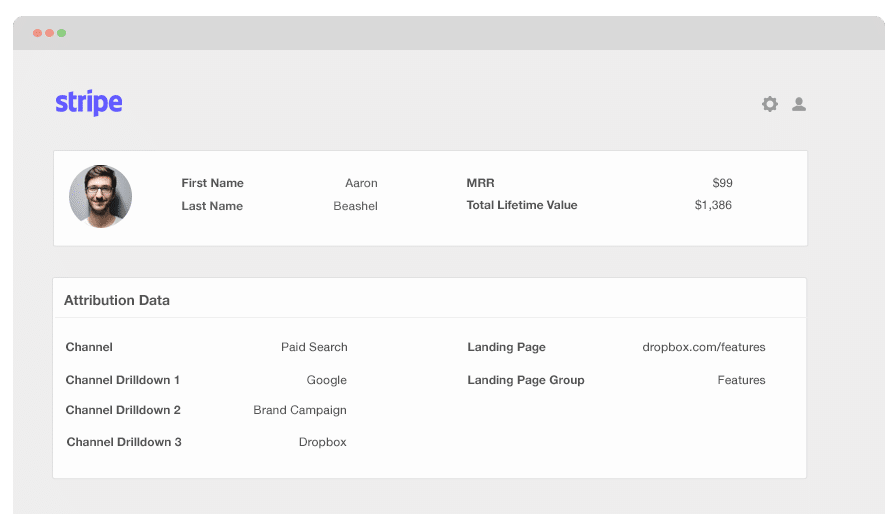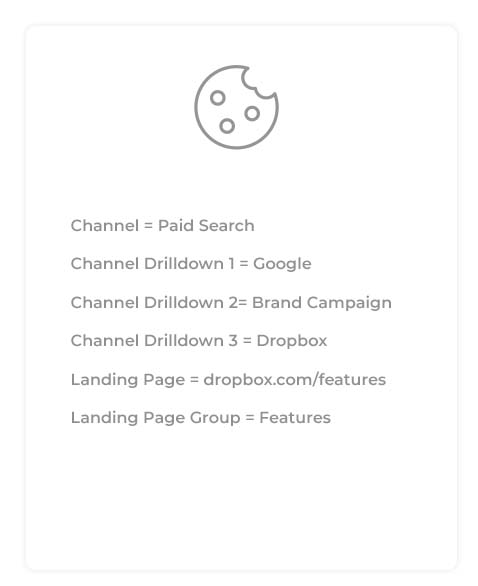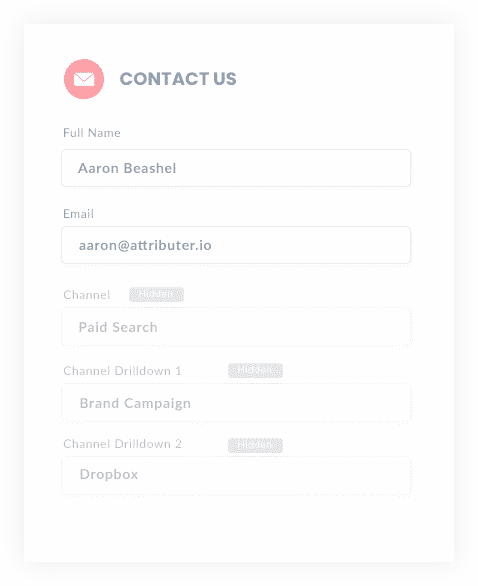The best way to get UTM parameters into Stripe
Learn the best way to get UTM parameters into Stripe so you know what marketing channels & campaigns are generating your leads, customers & revenue

Stripe is an amazing billing platform used by thousands of online businesses, and it's reports give you a good understanding of your revenue metrics.
But imagine if you could also segment this data by the different marketing channels and campaigns your customers came from. You'd be able to see which channels are working and which one's aren't, and you'd know what you need to do to get more customers and grow your business.
In this article, we'll show you how to use Attributer to capture UTM parameters in Stripe so you can know what marketing channels & campaigns are working to grow your business.
What is Attributer?
Attributer is a bit of code that you install onto your website.
When a visitor lands on your site, the code will run and figure out where that visitor has arrived on your site from.
It will then categorise each visitor into a series of marketing channels. These are similar to the channels you see in Google Analytics, such as Paid Search, Paid Social, Organic Search and more. All this information is then stored in a cookie in the visitor's browser.
Then, when a user signs up for your product or service, Attributer will pass the UTM parameters and other marketing attribution information into Stripe.
Finally, you can use this information to segment your reports in Stripe and see where your customers and revenue are coming from, or you can send the data to any of the hundreds of reporting tools that integrate with Stripe and run reports in those.
4 steps for capturing UTM parameters in Stripe
You can easily get UTM parameters (as well as marketing attribution data for organic channels) into Stripe by following these 4 steps:
1. Add UTM parameters to your ads

In order to help Attributer understand where your visitors are coming from, you'll need to add UTM parameters to all the ads & campaigns that you're currently running.
This includes the ads and campaigns that you're running on social media platforms, such as Facebook, Instagram, LinkedIn, Twitter, as well as bespoke campaigns you may be running with websites and news publications.
2. Attributer stores the UTM parameters in a cookie

Once you have implemented the Attributer script on your site, it will start looking for these UTM parameters in the URLs of your online visitors and storing them in a cookie on their browsers.
3. UTM parameters are sent to Stripe

When a visitor fills out a signup form on your site, the UTM parameters are passed into Stripe with all the other data that has been inputted by that user, for example, their first name, email address, etc.
This information can be sent to Stripe in two ways:
- Hidden fields in forms - You can add these hidden fields to your forms and Attributer will automatically write the necessary data to them. Once the form is submitted, this data is passed to Stripe with any other information submitted in the form.
- Retrieved from the cookie - A simple line of javascript can be added to your registration process so that the UTM parameters are captured from the Attributer cookie and then passed into Stripe. This is helpful if you give your users the option to sign up for your product or service by signing into their Google or Facebook account (for instance) as that removes the need for the user to complete a form.
4. Run reports in Stripe

From there, Stripe will then have both the user information, such as their first name, last name, email address, as well as the marketing and UTM parameters, empowering you to run better reports and derive stronger, actionable insights!
These reports will break down traditional revenue metrics based on the marketing channel and campaign that the online visitor came through. This includes:
- New Customers added each month by Channel or Campaign
- New Revenue added each month by Channel or Campaign
- Average Revenue Per Customer by Channel or Campaign
- Customer Lifetime Value by Channel or Campaign
- Customer Churn Rate by Channel or Campaign
- And many more!
You can run these reports inside Stripe itself, or sync your Stripe data (including the UTM data that is stored in Stripe) into other analytics tools to run even more detailed reports.
Why using Attributer is better than capturing raw UTM parameters
We understand that there are other tools out there that also help you capture UTM parameters to pass them into Stripe, or that you can also hire a developer to help you create and install a script for it.
But Attributer offers many benefits other tools out there don't have, including:
1. Captures all traffic
Earlier we mentioned that in order to track where your users are coming from and to help you better understand which marketing channels and campaigns have led to a higher return, you need to add UTM parameters to all the ad campaigns you're running.
But, what if a user has discovered your site and signed up organically?
While most tools on the market wouldn't be able to capture this, Attributer captures data on organic channels (like Organic Search, Organic Social, Referral, etc) and can pass all this information into Stripe as well.
2. Remembers the data across multiple page views and sessions
For many of the UTM capturing tools on the market, the UTM parameters need to be on the same page where the user completes registration in order for the UTM's to be passed along into Strip.
As an example, let's say someone clicks on your Facebook Ad and then is redirected to the landing page that you set up for that marketing campaign. From there, that user clicks 'Start Free Trial' and is redirected to another page to sign up for your product.
Because the landing page and the signup page is different, UTM parameters are lost and the data can't be passed into Stripe.
But with Attributer, the UTM data is stored as a cookie in the user's browser.
What this means is that the original UTM parameters are never lost and so regardless of which page the user signs up for your product on, that marketing data will be successfully passed into Stripe.
3. Provides cleaner data
It's no lie that UTM parameters can get messy with different formatting, inconsistencies and whatnot. This is especially the case if your campaigns and account have been managed by different people within your team or agencies throughout the months and years.
For example, let's say you have Facebook Ad campaigns are tagged with UTM_Source=Facebook (capitalized), some others with UTM_Source=facebook (uncapitalized), and some with UTM_Source=fb.
If you were trying to run reports in Stripe with other UTM parameter capturing tools, these inconsistencies would be treated as 3 separate channels, leaving you to have to manually connect these together on the backend.
But, Attributer knows how to handle these inconsistencies and will attribute them to 'Paid Social' regardless.
4. Captures landing page data as well
It's no secret that content creation takes marketers and writers hours to organize, write, edit and publish. And the reality is that if you don't know how many customers are being generated from your content marketing, you don't know whether your efforts are in vain.
Attributer helps with this. On top of UTM parameters, it also captures landing page category and landing page data, so you can measure the success and performance of the content on your site!
Wrap up
If you're wanting to run detailed reports with UTM parameters and marketing data in Stripe (or tools that connect to Stripe), then Attributer is what you need.
Yes, there are other UTM capturing tools out there on the market, but not any that can manage inconsistencies, measure the effectiveness of your blog content, store the UTM parameters in a browser cookie and more!
See for yourself with a free 14-day trial today!
Get Started For Free
Start your 14-day free trial of Attributer today!

About the Author
Aaron Beashel is the founder of Attributer and has over 15 years of experience in marketing & analytics. He is a recognized expert in the subject and has written articles for leading websites such as Hubspot, Zapier, Search Engine Journal, Buffer, Unbounce & more. Learn more about Aaron here.
